Report on Principles of Professional Working in Health and Social Care
VerifiedAdded on 2021/05/31
|15
|918
|47
Report
AI Summary
This report examines the principles of professional working within the health and social care sectors, emphasizing the importance of positive relationships with both service users and colleagues. It delves into patient empowerment, highlighting its components and the significance of patient rights and responsibilities. The report further explores various models of doctor-patient relationships and discusses strategies for conflict resolution within healthcare settings. It underscores the role of effective communication, ethical standards, and shared mental models in fostering a productive and supportive professional environment. The conclusion reiterates the vital role of maintaining positive professional relationships to enhance organizational productivity and improve patient care, reflecting on the evaluation of support services and promoting patient rights.

PRINCIPLES OF
PROFESSIONAL
WORKING
Name of the Student
Name of the University
PROFESSIONAL
WORKING
Name of the Student
Name of the University
Paraphrase This Document
Need a fresh take? Get an instant paraphrase of this document with our AI Paraphraser
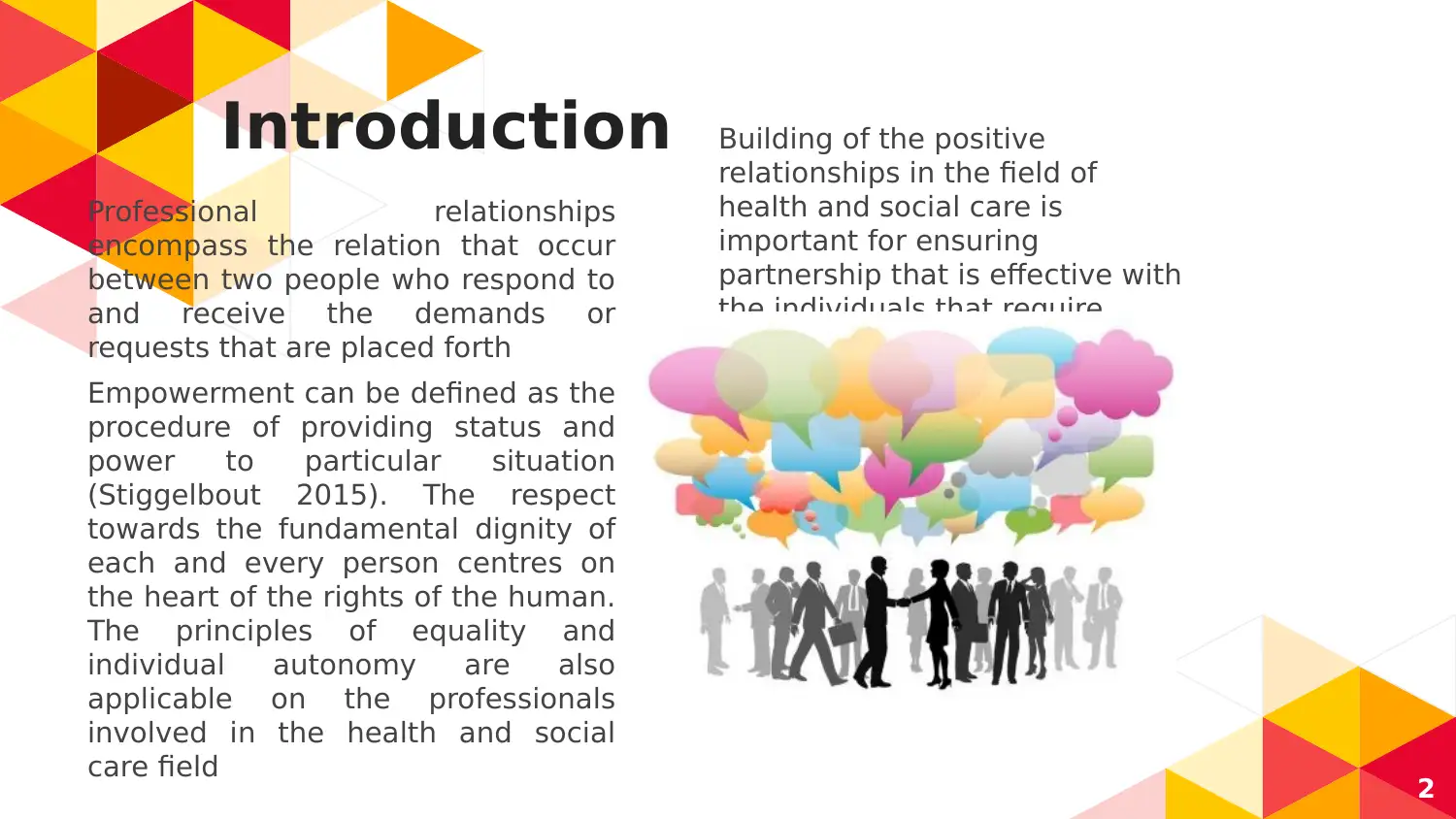
Introduction Building of the positive
relationships in the field of
health and social care is
important for ensuring
partnership that is effective with
the individuals that require
support and care
Professional relationships
encompass the relation that occur
between two people who respond to
and receive the demands or
requests that are placed forth
Empowerment can be defined as the
procedure of providing status and
power to particular situation
(Stiggelbout 2015). The respect
towards the fundamental dignity of
each and every person centres on
the heart of the rights of the human.
The principles of equality and
individual autonomy are also
applicable on the professionals
involved in the health and social
care field 2
relationships in the field of
health and social care is
important for ensuring
partnership that is effective with
the individuals that require
support and care
Professional relationships
encompass the relation that occur
between two people who respond to
and receive the demands or
requests that are placed forth
Empowerment can be defined as the
procedure of providing status and
power to particular situation
(Stiggelbout 2015). The respect
towards the fundamental dignity of
each and every person centres on
the heart of the rights of the human.
The principles of equality and
individual autonomy are also
applicable on the professionals
involved in the health and social
care field 2
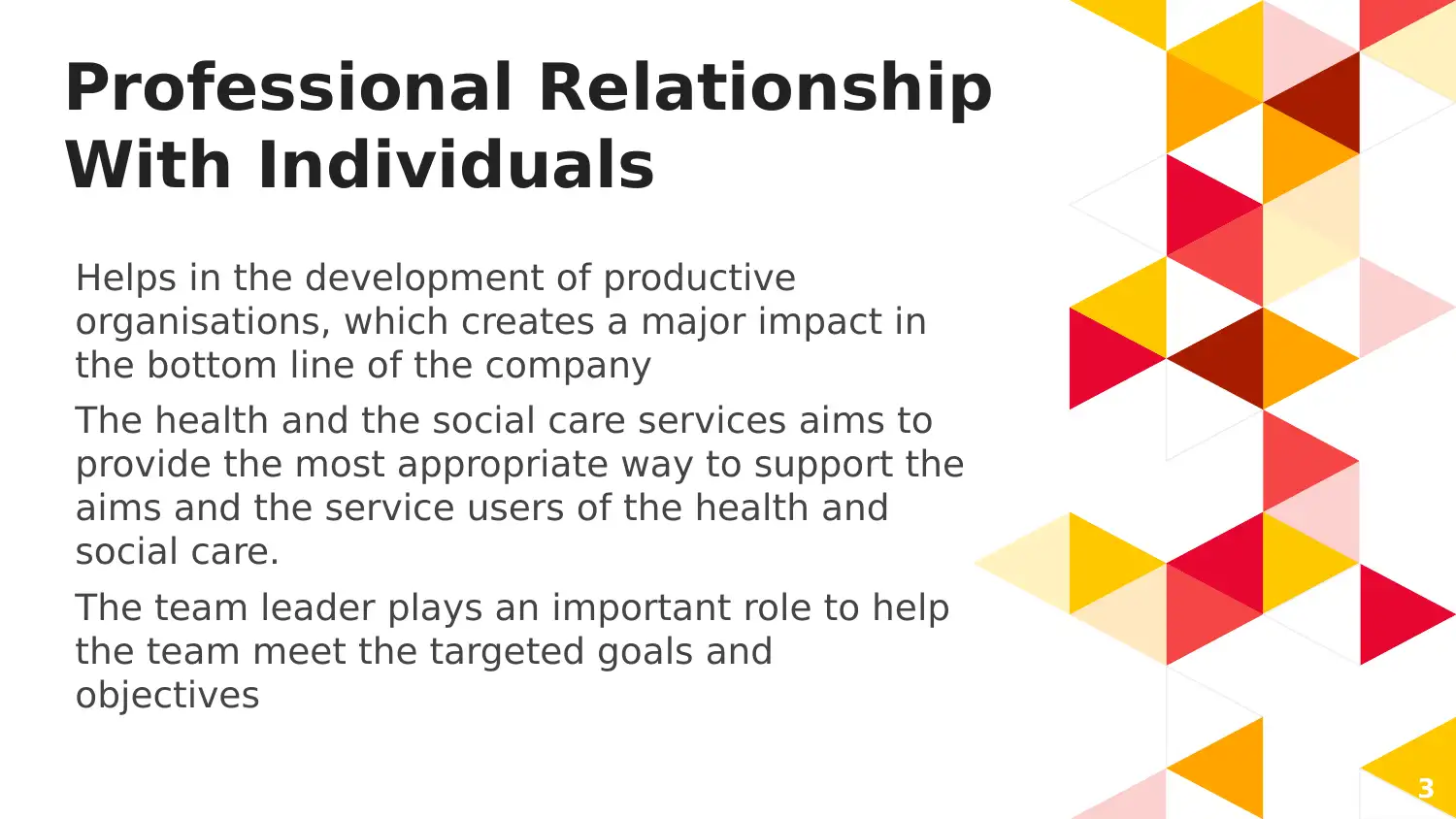
Professional Relationship
With Individuals
Helps in the development of productive
organisations, which creates a major impact in
the bottom line of the company
The health and the social care services aims to
provide the most appropriate way to support the
aims and the service users of the health and
social care.
The team leader plays an important role to help
the team meet the targeted goals and
objectives
3
With Individuals
Helps in the development of productive
organisations, which creates a major impact in
the bottom line of the company
The health and the social care services aims to
provide the most appropriate way to support the
aims and the service users of the health and
social care.
The team leader plays an important role to help
the team meet the targeted goals and
objectives
3
⊘ This is a preview!⊘
Do you want full access?
Subscribe today to unlock all pages.

Trusted by 1+ million students worldwide

Positive Relationship
Relationship must be
generally built on trust and
will help in making the
professionals more efficient in
showing a commitment
towards their duty
Poor relationship dampens
the organisational culture of
the healthcare organisation
Relationship must be
generally built on trust and
will help in making the
professionals more efficient in
showing a commitment
towards their duty
Poor relationship dampens
the organisational culture of
the healthcare organisation
Paraphrase This Document
Need a fresh take? Get an instant paraphrase of this document with our AI Paraphraser
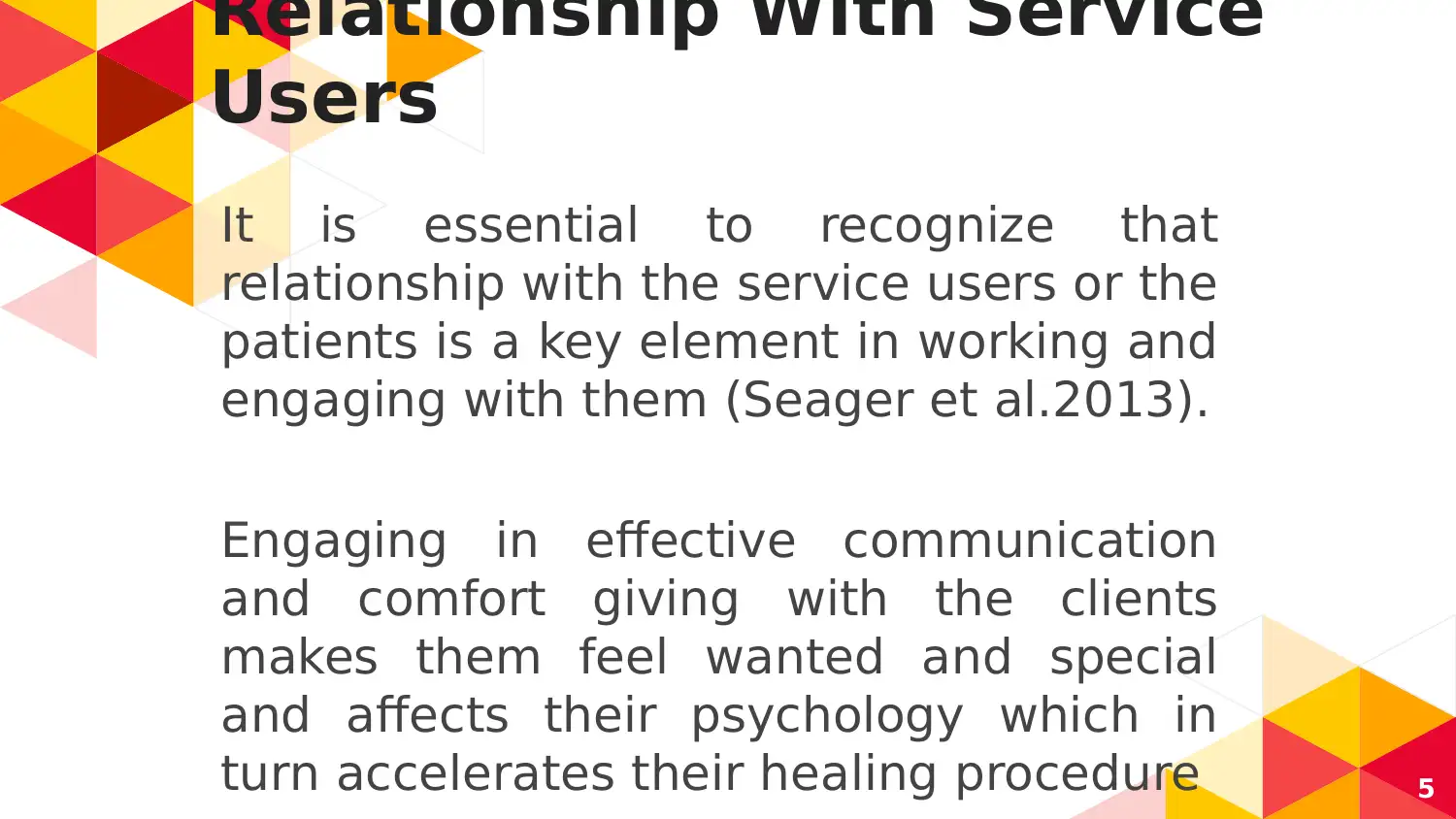
Relationship With Service
Users
It is essential to recognize that
relationship with the service users or the
patients is a key element in working and
engaging with them (Seager et al.2013).
Engaging in effective communication
and comfort giving with the clients
makes them feel wanted and special
and affects their psychology which in
turn accelerates their healing procedure 5
Users
It is essential to recognize that
relationship with the service users or the
patients is a key element in working and
engaging with them (Seager et al.2013).
Engaging in effective communication
and comfort giving with the clients
makes them feel wanted and special
and affects their psychology which in
turn accelerates their healing procedure 5
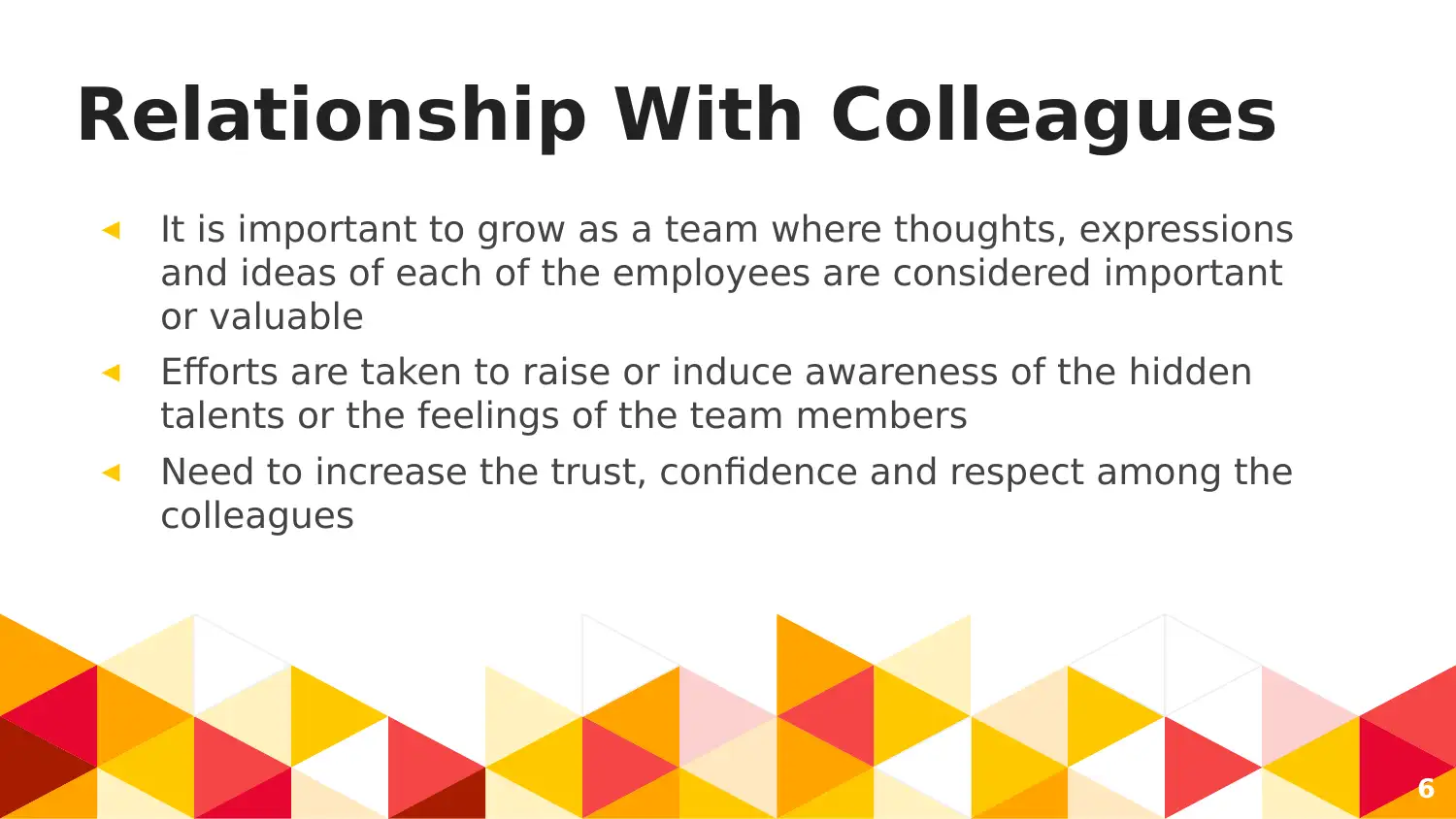
Relationship With Colleagues
◂ It is important to grow as a team where thoughts, expressions
and ideas of each of the employees are considered important
or valuable
◂ Efforts are taken to raise or induce awareness of the hidden
talents or the feelings of the team members
◂ Need to increase the trust, confidence and respect among the
colleagues
6
◂ It is important to grow as a team where thoughts, expressions
and ideas of each of the employees are considered important
or valuable
◂ Efforts are taken to raise or induce awareness of the hidden
talents or the feelings of the team members
◂ Need to increase the trust, confidence and respect among the
colleagues
6
⊘ This is a preview!⊘
Do you want full access?
Subscribe today to unlock all pages.

Trusted by 1+ million students worldwide
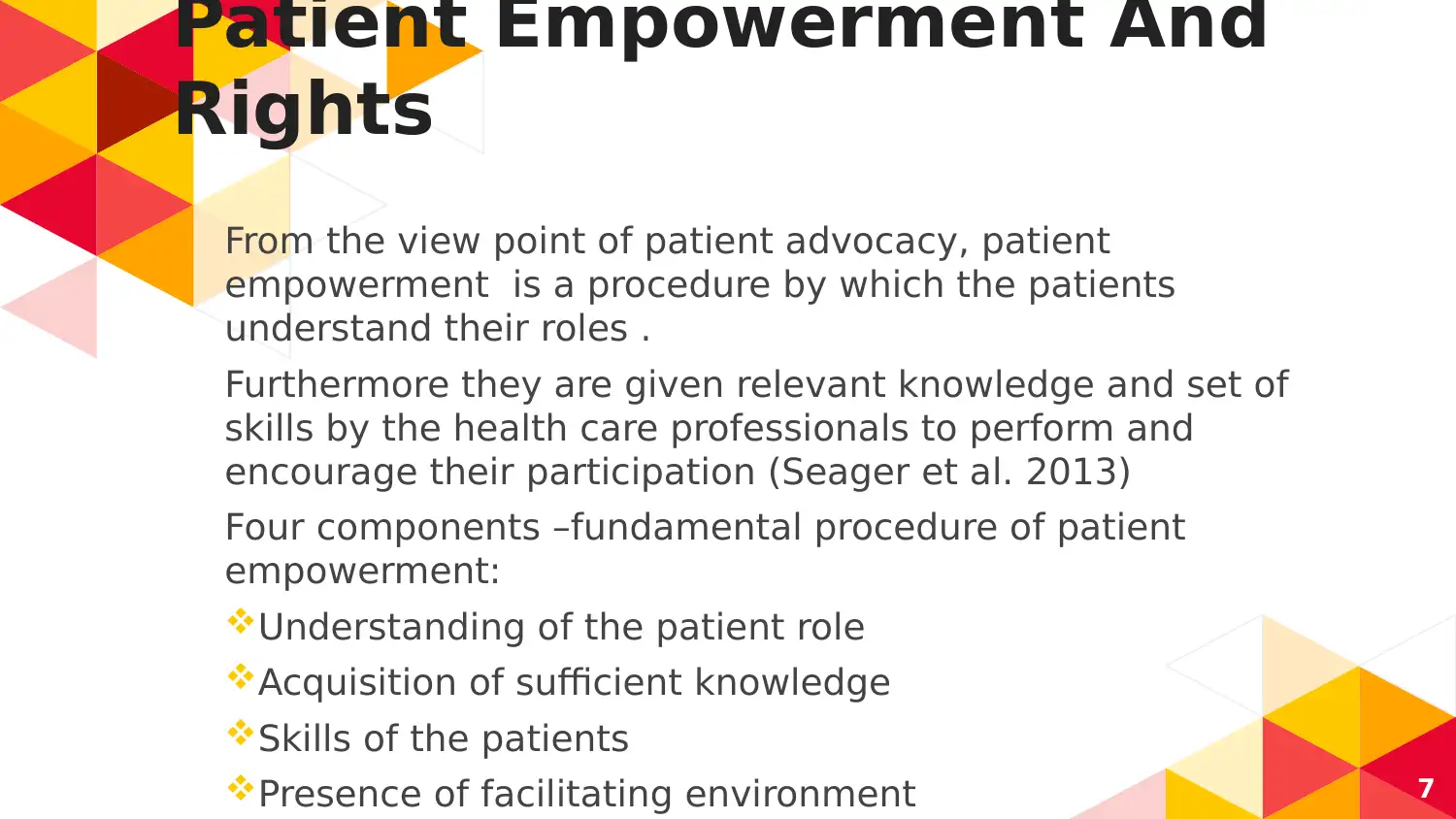
From the view point of patient advocacy, patient
empowerment is a procedure by which the patients
understand their roles .
Furthermore they are given relevant knowledge and set of
skills by the health care professionals to perform and
encourage their participation (Seager et al. 2013)
Four components –fundamental procedure of patient
empowerment:
Understanding of the patient role
Acquisition of sufficient knowledge
Skills of the patients
Presence of facilitating environment
Patient Empowerment And
Rights
7
empowerment is a procedure by which the patients
understand their roles .
Furthermore they are given relevant knowledge and set of
skills by the health care professionals to perform and
encourage their participation (Seager et al. 2013)
Four components –fundamental procedure of patient
empowerment:
Understanding of the patient role
Acquisition of sufficient knowledge
Skills of the patients
Presence of facilitating environment
Patient Empowerment And
Rights
7
Paraphrase This Document
Need a fresh take? Get an instant paraphrase of this document with our AI Paraphraser
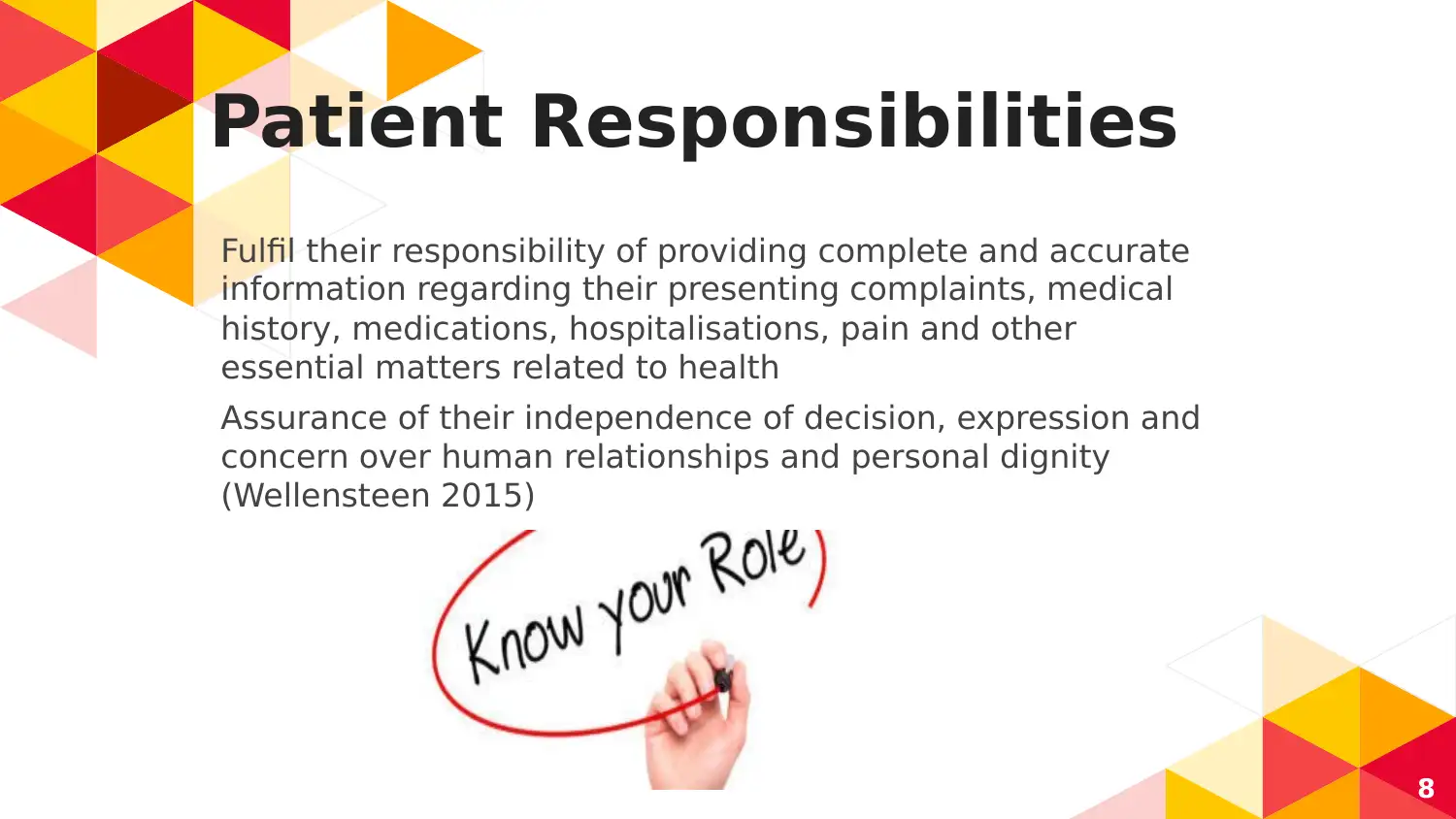
Patient Responsibilities
Fulfil their responsibility of providing complete and accurate
information regarding their presenting complaints, medical
history, medications, hospitalisations, pain and other
essential matters related to health
Assurance of their independence of decision, expression and
concern over human relationships and personal dignity
(Wellensteen 2015)
8
Fulfil their responsibility of providing complete and accurate
information regarding their presenting complaints, medical
history, medications, hospitalisations, pain and other
essential matters related to health
Assurance of their independence of decision, expression and
concern over human relationships and personal dignity
(Wellensteen 2015)
8
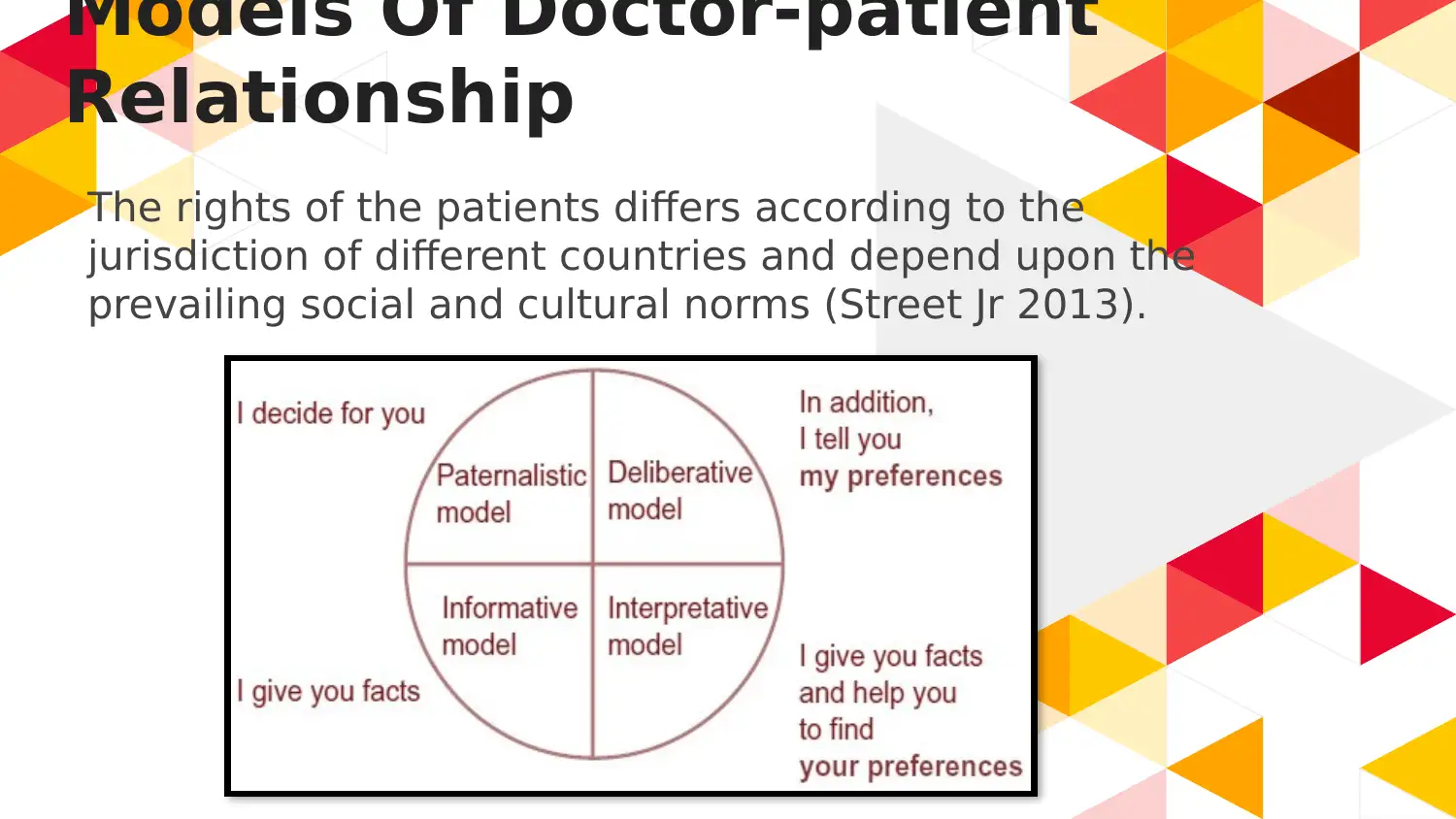
Models Of Doctor-patient
Relationship
The rights of the patients differs according to the
jurisdiction of different countries and depend upon the
prevailing social and cultural norms (Street Jr 2013).
Relationship
The rights of the patients differs according to the
jurisdiction of different countries and depend upon the
prevailing social and cultural norms (Street Jr 2013).
⊘ This is a preview!⊘
Do you want full access?
Subscribe today to unlock all pages.

Trusted by 1+ million students worldwide
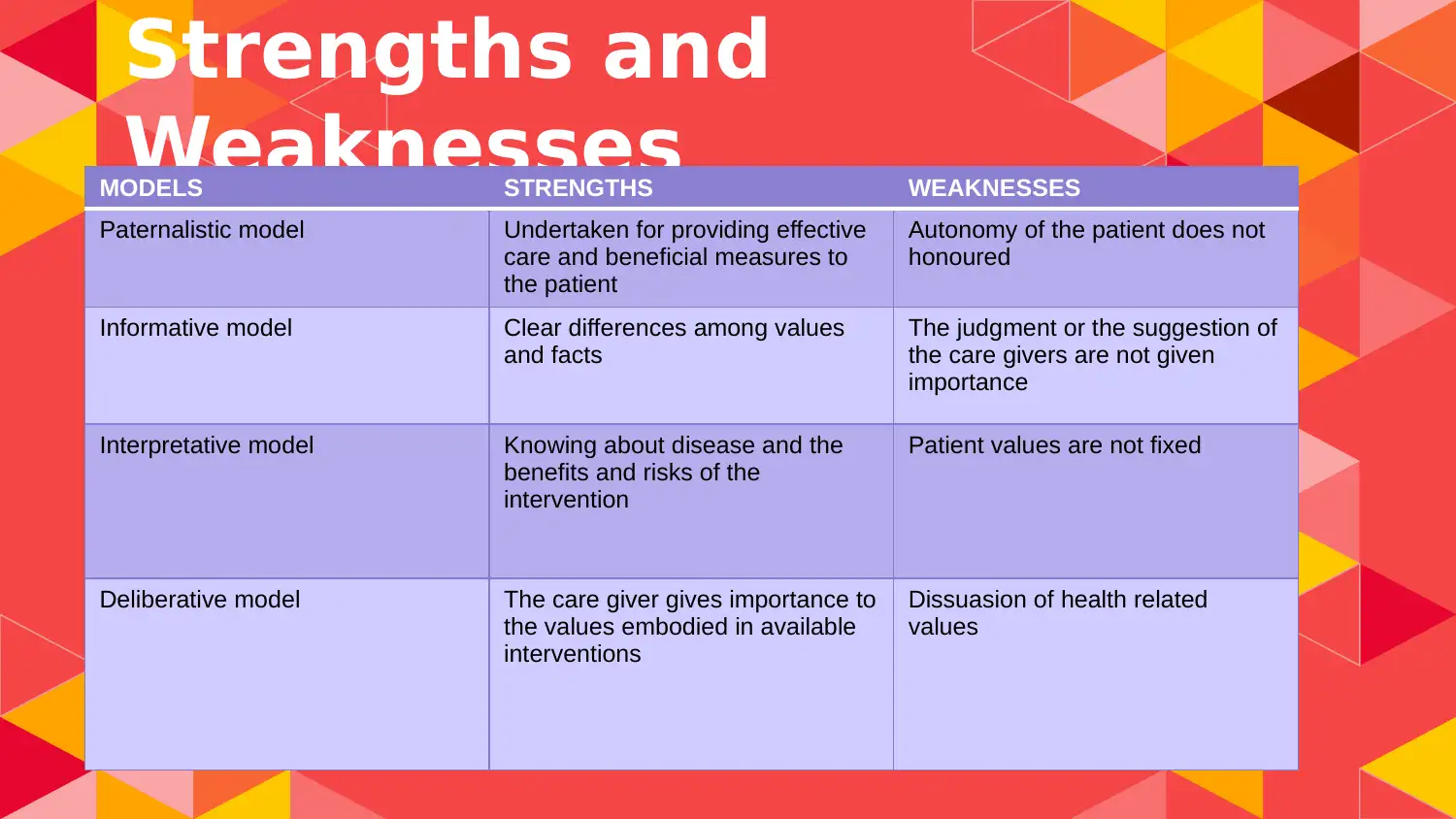
Strengths and
WeaknessesMODELS STRENGTHS WEAKNESSES
Paternalistic model Undertaken for providing effective
care and beneficial measures to
the patient
Autonomy of the patient does not
honoured
Informative model Clear differences among values
and facts
The judgment or the suggestion of
the care givers are not given
importance
Interpretative model Knowing about disease and the
benefits and risks of the
intervention
Patient values are not fixed
Deliberative model The care giver gives importance to
the values embodied in available
interventions
Dissuasion of health related
values
WeaknessesMODELS STRENGTHS WEAKNESSES
Paternalistic model Undertaken for providing effective
care and beneficial measures to
the patient
Autonomy of the patient does not
honoured
Informative model Clear differences among values
and facts
The judgment or the suggestion of
the care givers are not given
importance
Interpretative model Knowing about disease and the
benefits and risks of the
intervention
Patient values are not fixed
Deliberative model The care giver gives importance to
the values embodied in available
interventions
Dissuasion of health related
values
Paraphrase This Document
Need a fresh take? Get an instant paraphrase of this document with our AI Paraphraser
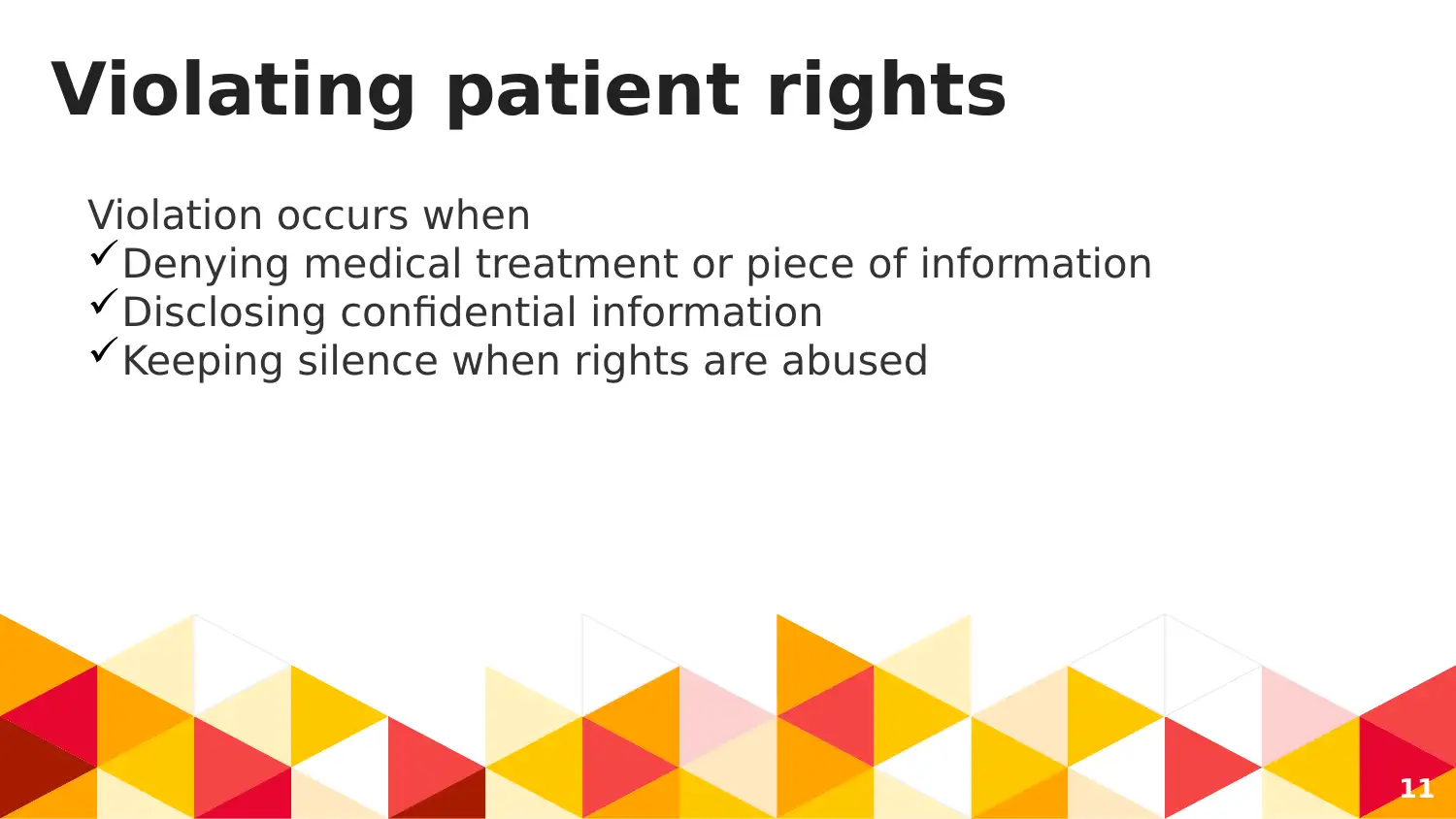
Violating patient rights
11
Violation occurs when
Denying medical treatment or piece of information
Disclosing confidential information
Keeping silence when rights are abused
11
Violation occurs when
Denying medical treatment or piece of information
Disclosing confidential information
Keeping silence when rights are abused
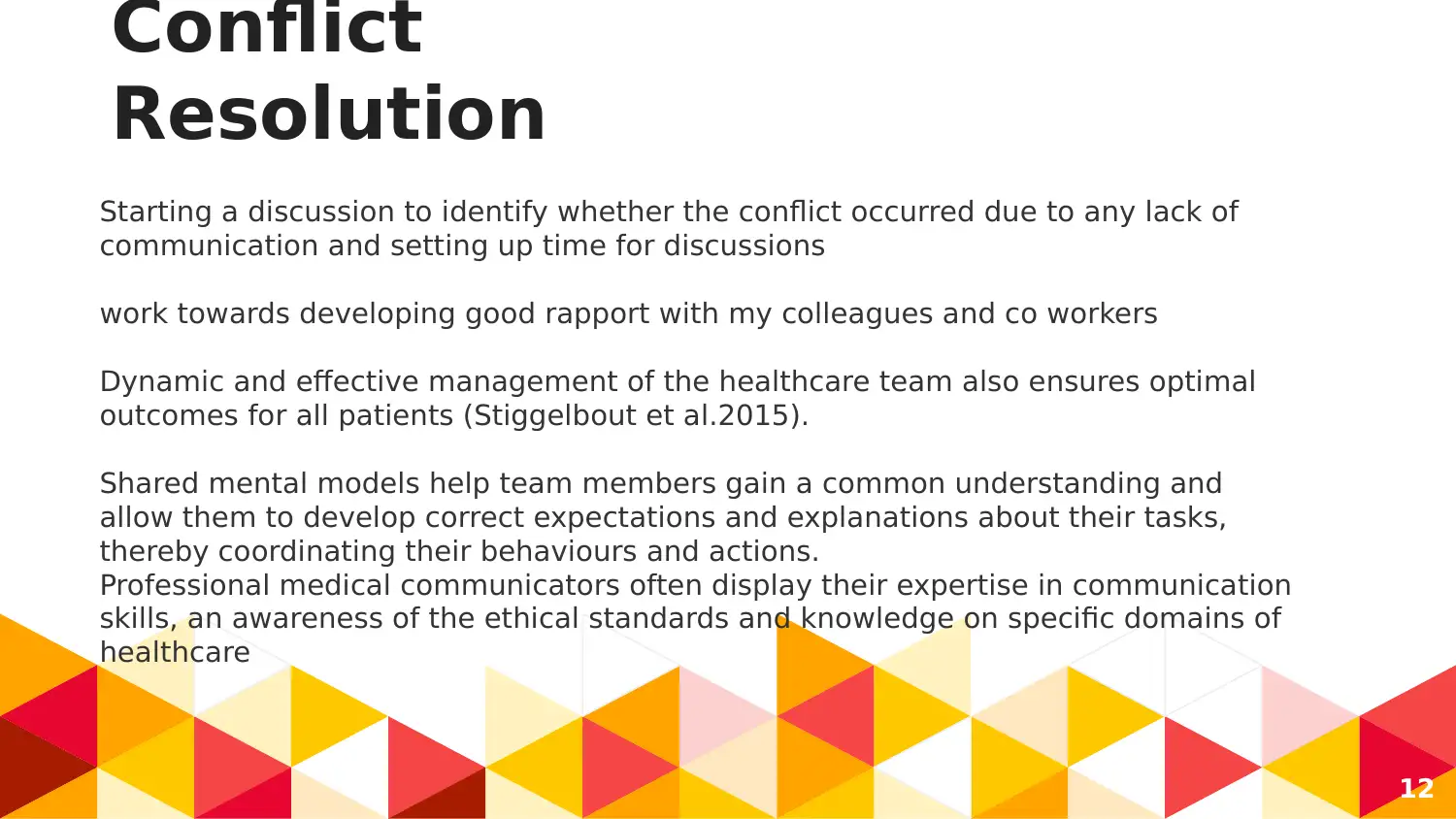
Conflict
Resolution
12
Starting a discussion to identify whether the conflict occurred due to any lack of
communication and setting up time for discussions
work towards developing good rapport with my colleagues and co workers
Dynamic and effective management of the healthcare team also ensures optimal
outcomes for all patients (Stiggelbout et al.2015).
Shared mental models help team members gain a common understanding and
allow them to develop correct expectations and explanations about their tasks,
thereby coordinating their behaviours and actions.
Professional medical communicators often display their expertise in communication
skills, an awareness of the ethical standards and knowledge on specific domains of
healthcare
Resolution
12
Starting a discussion to identify whether the conflict occurred due to any lack of
communication and setting up time for discussions
work towards developing good rapport with my colleagues and co workers
Dynamic and effective management of the healthcare team also ensures optimal
outcomes for all patients (Stiggelbout et al.2015).
Shared mental models help team members gain a common understanding and
allow them to develop correct expectations and explanations about their tasks,
thereby coordinating their behaviours and actions.
Professional medical communicators often display their expertise in communication
skills, an awareness of the ethical standards and knowledge on specific domains of
healthcare
⊘ This is a preview!⊘
Do you want full access?
Subscribe today to unlock all pages.

Trusted by 1+ million students worldwide
1 out of 15
Related Documents
Your All-in-One AI-Powered Toolkit for Academic Success.
+13062052269
info@desklib.com
Available 24*7 on WhatsApp / Email
![[object Object]](/_next/static/media/star-bottom.7253800d.svg)
Unlock your academic potential
Copyright © 2020–2025 A2Z Services. All Rights Reserved. Developed and managed by ZUCOL.





